Aston Martin’s V12 Vantage is the end of an era. Not just because it’s billed as ‘the final time a 5.2 litre Twin Turbo V12 will be fitted to the Vantage’, but because an unscripted plot twist means it’s also the last Aston launched under CEO Tobias Moers, who officially departed earlier this month.
There’s no mistaking Moers’ influence from behind the wheel – the V12 is muscular, aggressive and clearly built with track use and lap times in mind. For both better and worse, it is a very different beast to the F1 Edition that gently if appreciably moved the needle on the standard Vantage last year.
Just 333 examples of the V12 Vantage will be produced at Gaydon, all of them coupes, all costing from £265,000 plus options – more than double the cost of the standard Vantage. If you’re thinking that’s too steep, all had apparently been accounted for before we’d even got behind the wheel of this pre-production example.
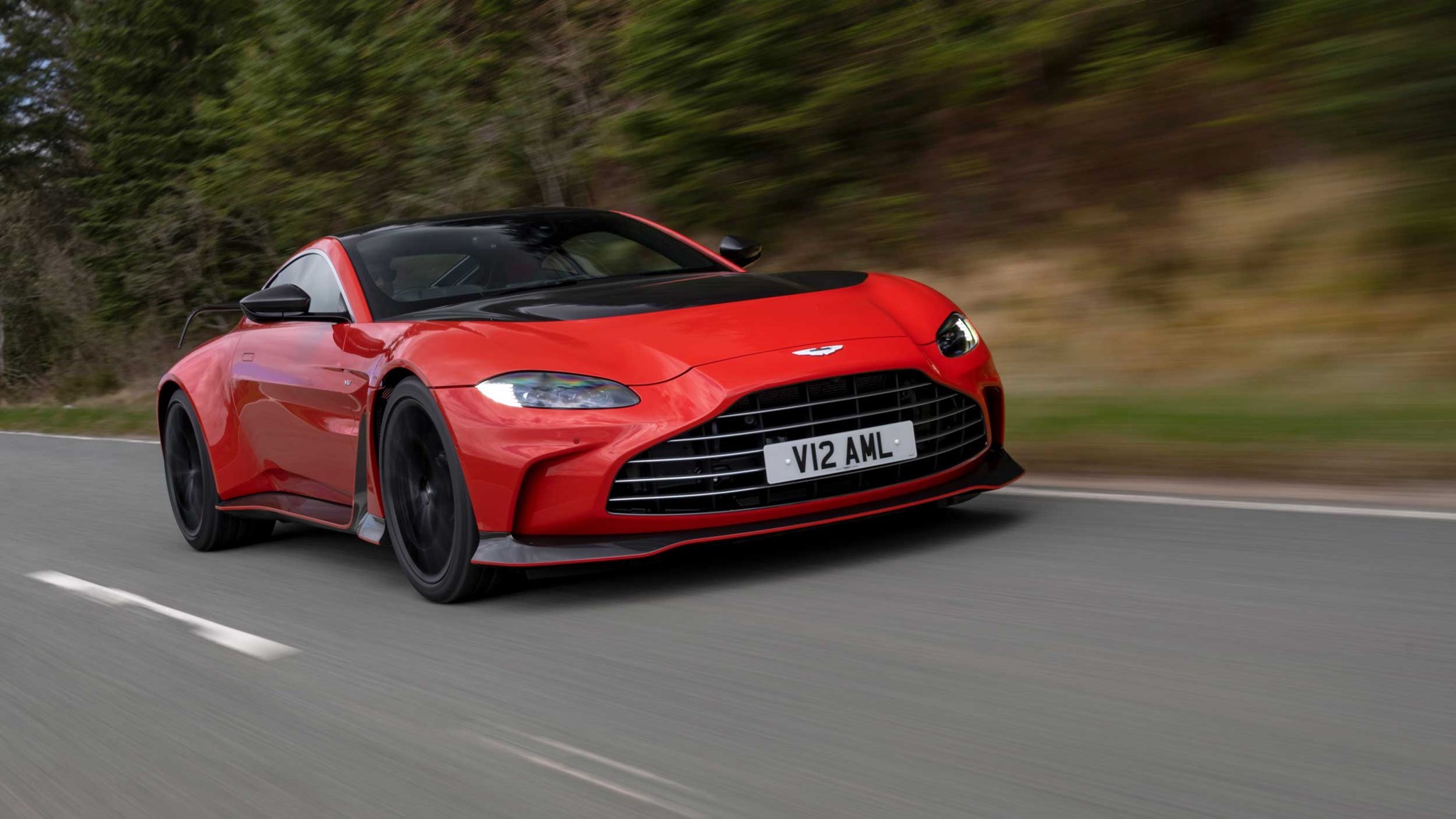
Tell me about that V12 engine?
It’s no surprise that replacing the Vantage’s 4.0-litre twin-turbo AMG-derived V8 with Aston’s all-alloy 5.2-litre twin-turbocharged V12 makes for a very healthy increase in performance. Versus the V8-powered F1 Edition, power shoots up 163bhp to 690bhp, torque by 50lb ft to 555lb ft. That’s good for 0-60mph in 3.4 seconds and 200mph flat out. Lap times? They’re not quoted, which does feel a little odd given this car has clearly been bred to monster them.
It’s worth noting that while this engine is shared with both the DB11 AMR and DBS Superleggera, its outputs differ from both, which are 630bhp/516lb ft and 690bhp/555lb ft respectively.
There’s also an eight-speed automatic gearbox, with a calibration that’s apparently taken a peek at the F1 Edition’s homework. No manual is offered and you already know the Vantage is rear-wheel-drive only.
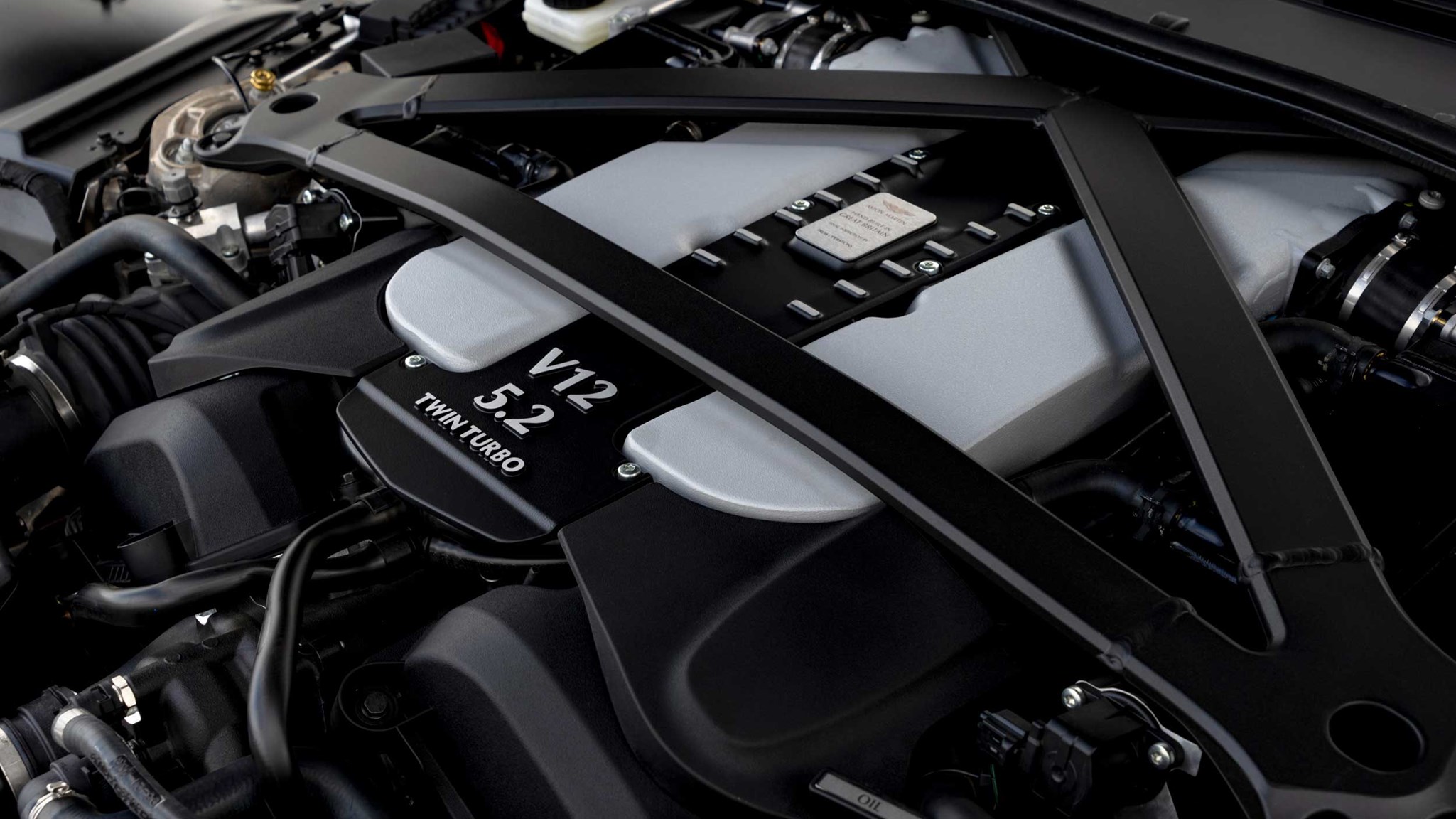
Presumably weight shoots up too?
Yes it does, by 105kg to a chunky 1795kg with fluids versus the F1 Edition. Clearly that would’ve been worse had Aston not fitted carbon-ceramic brakes as standard (-23kg), a stainless-steel exhaust (-7.2kg), an entire lightweight carbonfibre front end (they’d have needed a new front end to cover the wider track and unlock more cooling anyway), plus there’s a composite rear bumper and boot.
Owners wanting to trim a little more flab can option the carbonfibre sports seats – they save 7.3kg and cost £4295. Just know that the exposed carbonfibre lip is uncomfortable when you climb in and out and may leave hard to explain bruising.
Naturally weight distribution edges forwards give the V12’s placement, even with the carbonfibre front end balancing the scales a little – it’s split 53:47 in the V12 versus 50:50 for the F1 Edition.
What’s Aston done to the chassis and braking?
Spring rates increase 50 per cent at the front versus a regular Vantage, 40 per cent rear, the damping’s uprated, front anti-roll bar stiffness rises 5 per cent, but actually drops 40 per cent at the rear (presumably to help traction), plus there’s various bracing measures to increase body stiffness 8 per cent, with shear panels front and rear, a new rear strut brace and extra bracing around the fuel tank. (Yes, the F1 Edition pushes more in this direction, but the changes are far less pronounced).
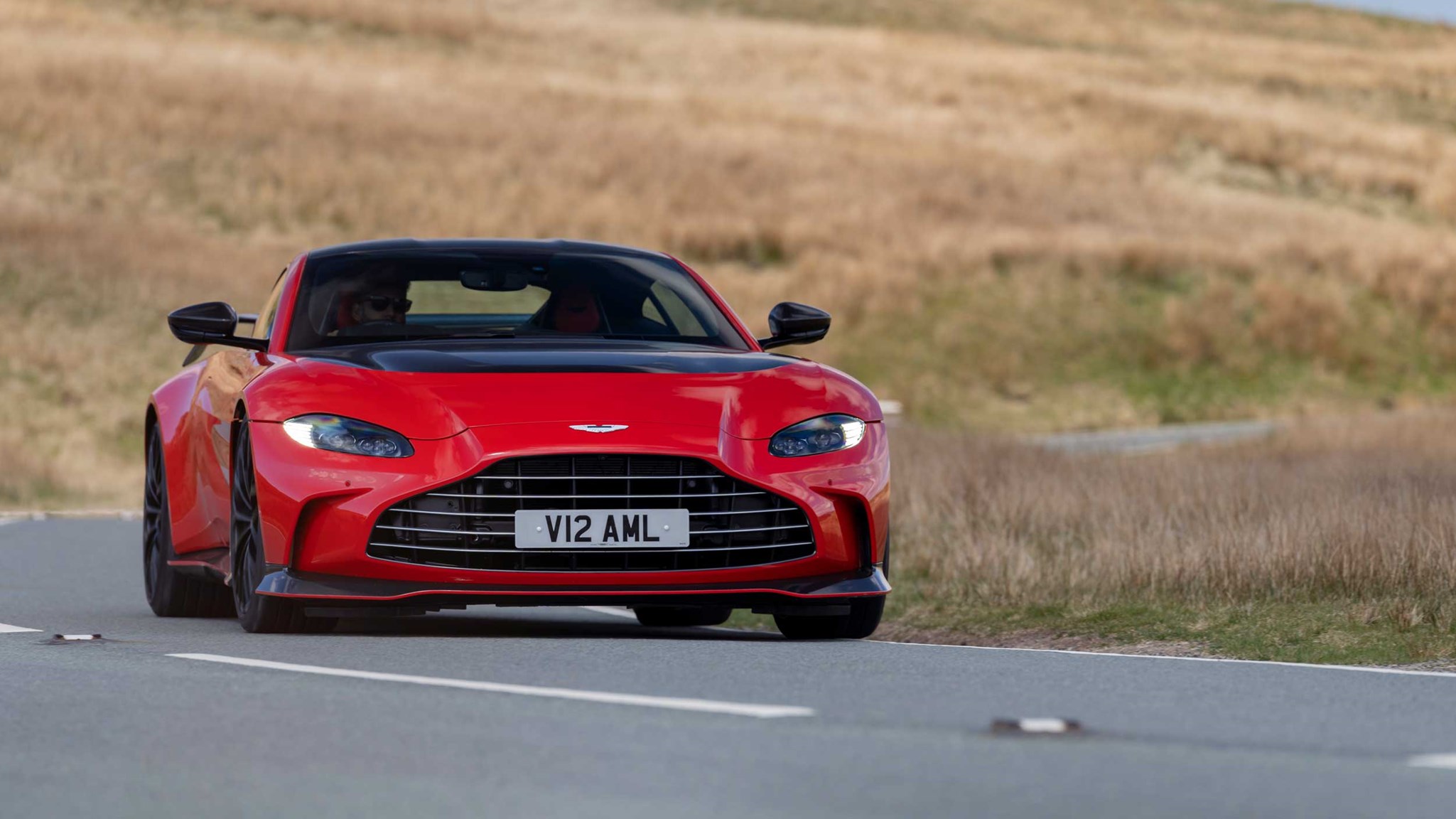
The track width increases by 40mm, with 21-inch alloys matching the F1 Edition for diameter but stretching from that model’s 255/35 front and 295/30 rear to the V12’s 275/35 and 315/30 – a huge increase that has a big effect on handling. They switch from P Zeros to Michelin Pilot Sport 4S tyres too. The focus is on strong grip whatever the weather, but stickier Cup 2 rubber is a notable absence from the options list given the V12’s hardcore bias.
To complement the uplift in mechanical grip, there’s claimed downforce of 204kg at the 200mph top speed – the rear spoiler is optional, and Aston says the underbody does much of the heavy lifting, but the engineers probably put the rear wing there for a reason.
What’s the V12 Vantage like to drive?
We’re testing at Aston Martin’s Stowe test facility, Silverstone, handily the same location we tested the F1 Edition less than a year previously. Half a lap in and it’s clear these aren’t nuanced differences.
Performance comes in with a measured build from very low revs despite the figures saying the full 555lb ft is switched on from 1800rpm, but when you’re on the move the feeling is of instant muscle that bursts with response and is always ready to fling you further and faster down the track. The V12 is a giant leap faster than the F1 Edition, no matter that it’s significantly heavier.
With a 7000rpm redline it doesn’t have the bandwidth nor shrieky wail of a Ferrari V12, but it’s thrilling and burns with real fury towards the redline, and the throaty, thunderous soundtrack has an appeal all of its own – less appealing is the way it also hangs onto revs while making a deflating balloon kind of noise off-throttle, but there’s no denying it’s a charismatic lump of metal.
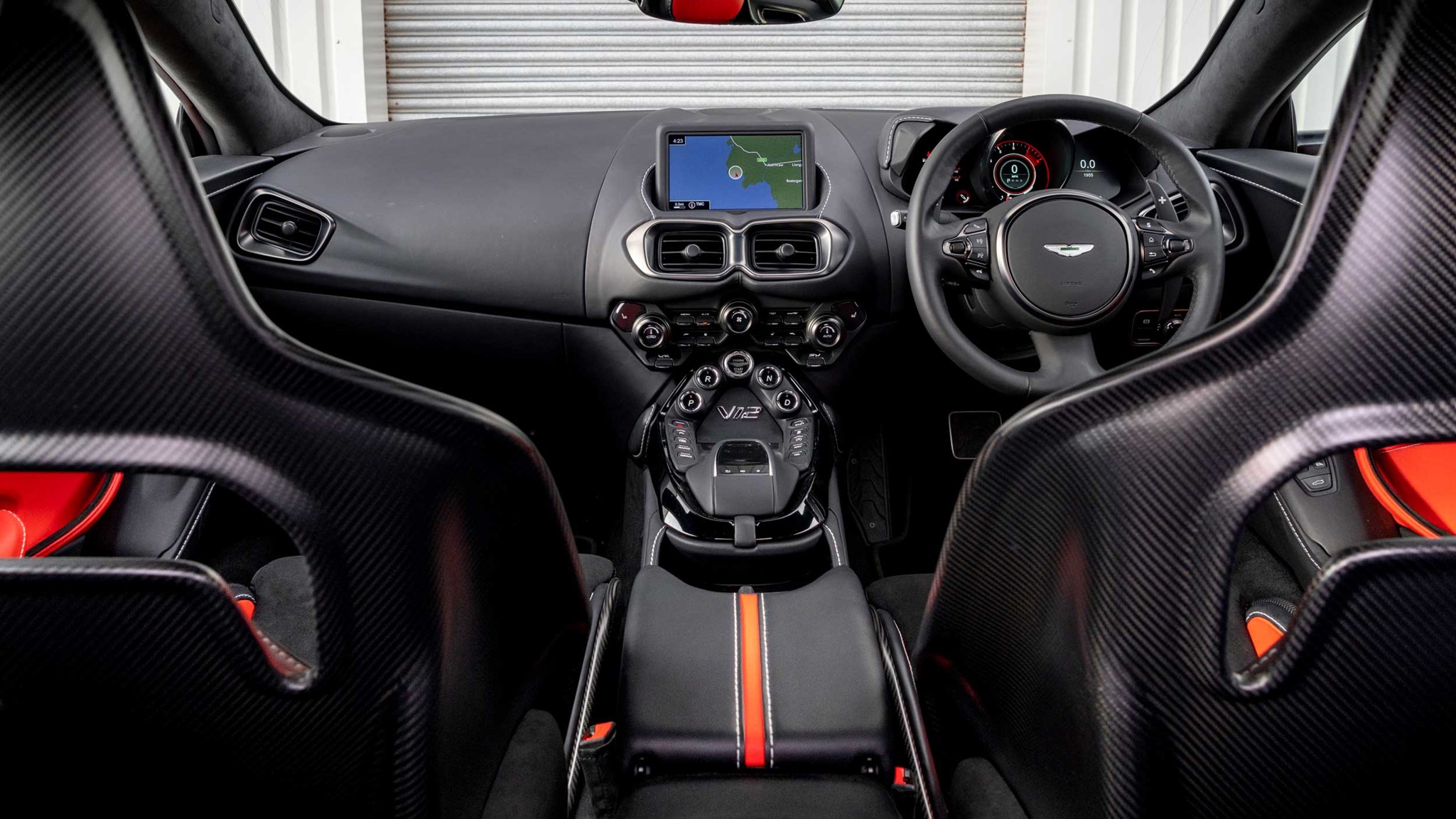
Mid-range delivery is much more progressive than I remember of the DBS, which pauses and then kicks hard – no doubt the reduced torque is key, and makes the V12 Vantage more intuitive to steer on the throttle.
Can the V12 Vantage handle all that muscle?
In a word yes, despite the risk that a heavy V12 will induce messy understeer and render the rear tyres next to useless at deploying the extra performance. Stowe is a great way to stress test all that, especially its fiddly flicks towards the end of the short lap that require patience in the F1 Edition.
Instead the V12 Vantage just piles in deep, elbows out with its wide track, and really digs in to the track surface. The freshly calibrated steering has the chunkier feel you’d expect given uprated springs, and the chassis resists dive well, even under the heavy braking that these carbon-ceramics encourage. Turn in briskly and the composure continues – the V12 rolls very little, settles calmly at the apex and the crisp throttle allows you to tuck the nose in with pinpoint accuracy, or power out on opposite lock if you’re a little more liberal with the power. So, yes, it’s extrovert, but traction is actually very good considering the power surplus – you can certainly dip into it far more aggressively than I expected.
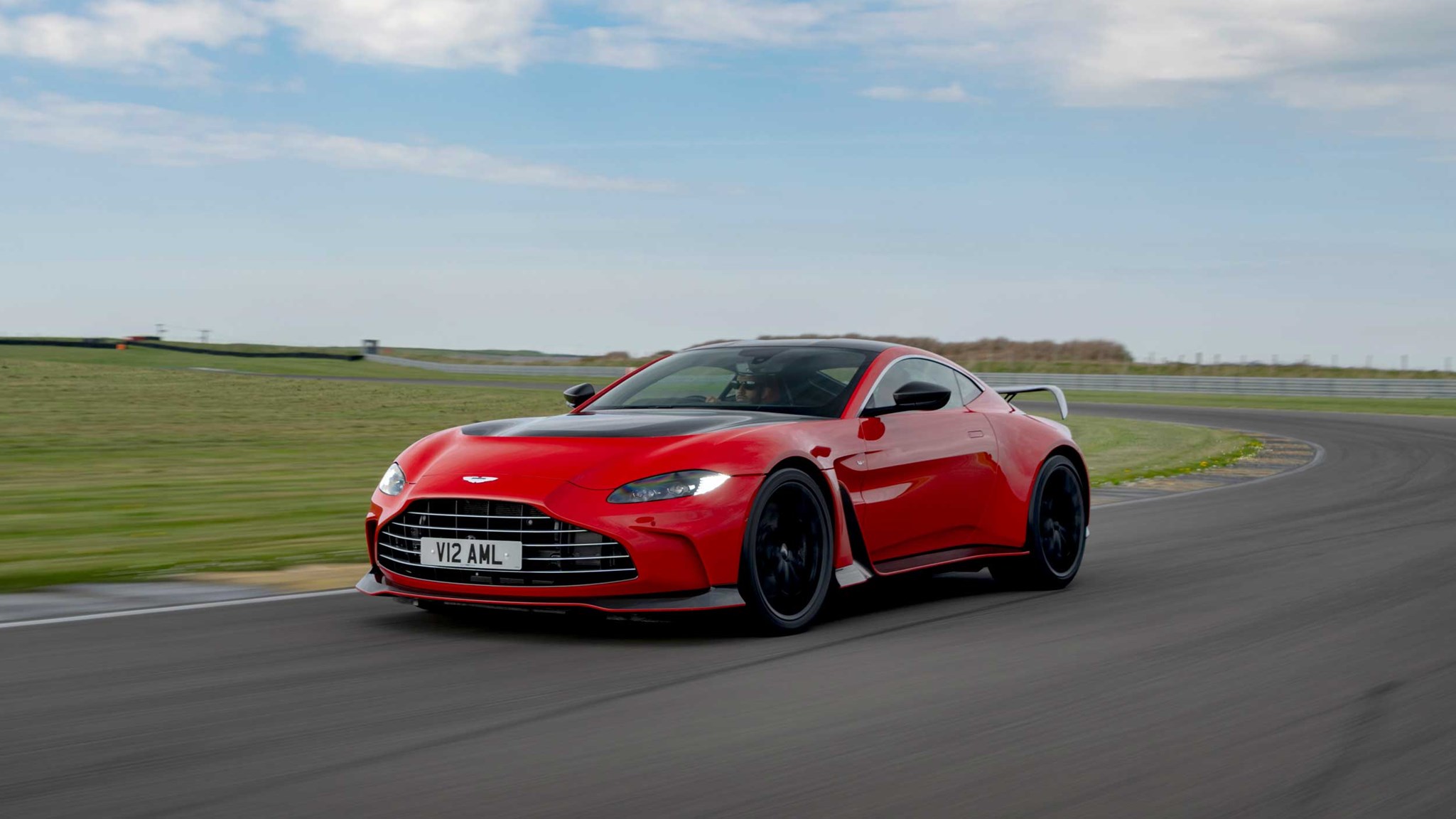
Pushed to extremes and driven hard at a corner, the V12 lets go by rotating into oversteer, but it does so with a highly languid and composed slide – even then, sitting at an angle with traction compromised, the overwhelming sense is it wants to get straight and start powering forwards again. It’s a very satisfying thing to drive on the track, certainly much more so than the already very good F1 Edition.
The key weaknesses relate to the gearbox, which often feels too reluctant to downshift, and the stability control system, which remains too keen to intervene in its mid-way setting. Finally, the steering might be accurate and intuitively weighted, but it can’t come close to the fizzy feel of earlier V12 models.
Does the V12 Vantage translate to the road?
The inevitable trade for the V12’s sharper on-track dynamics is a rowdier, more compromised personality on the road – there’s pronounced tyre roar, diff whine that unfortunately coincides with motorway speeds (like the DBS, but louder), and brake pads that sound like a truck horn if they’re moderately hot and you come to a full or near stop (it never happened on track, but did on the road – we’re told this will be sorted for production). The ride is stiffer of course, but there’s still underlying compliance so it doesn’t thunk about. Even so, just pootling about in the V12 Vantage can all get a bit tiresome in a way the F1 Edition simply doesn’t.
They pay-off comes when you find a quiet road and crank up the pace. The ride calms down with speed, the noise and performance dominates in a good way, and there’s a rollercoaster quality to the way the V12 dives into turns then hooks up early and powers out, extravagantly rear-biased but palpably clawing grip from the surface and gathering speed all the while. Wonderful.
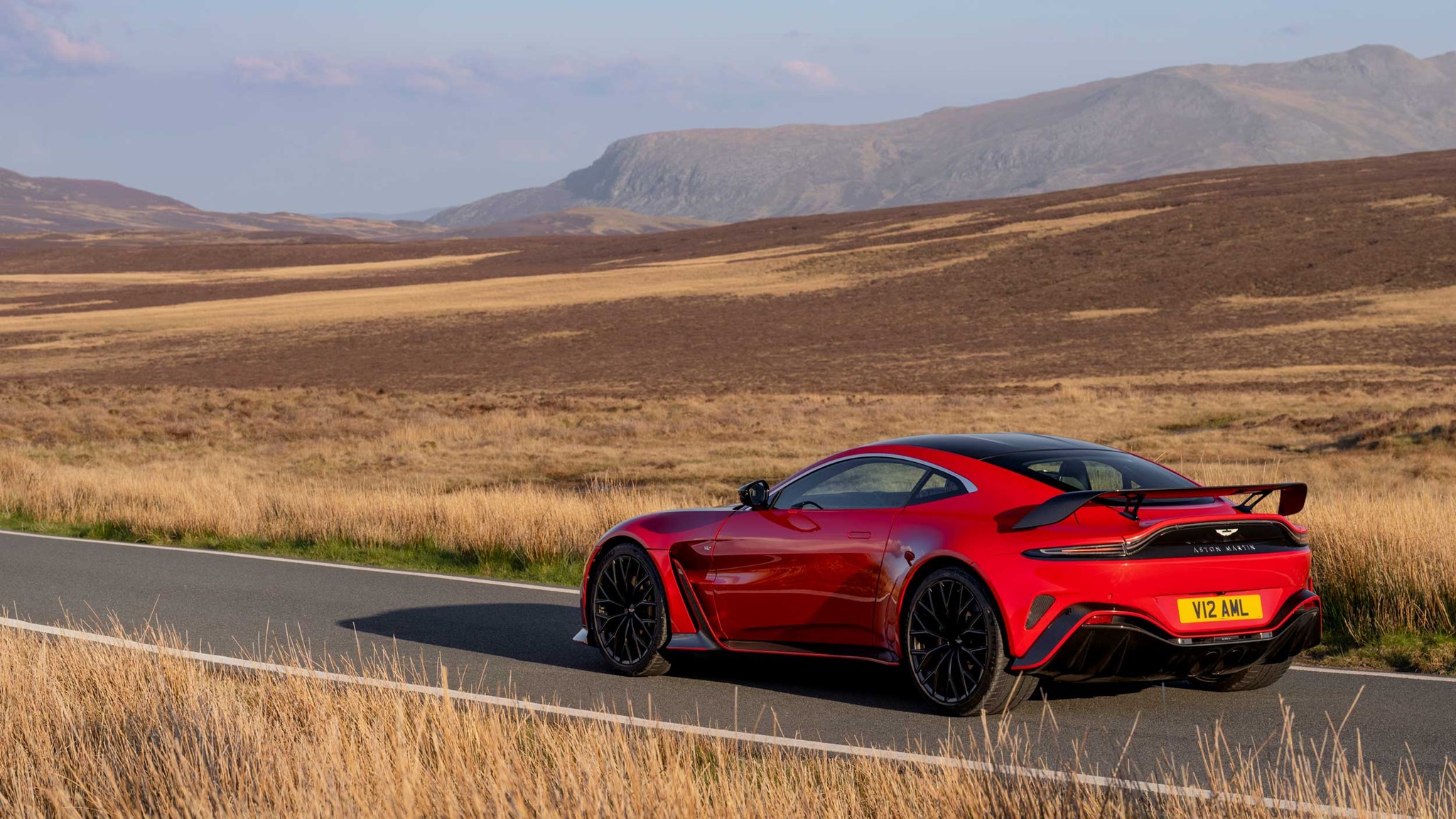
Verdict
The V12 Vantage makes a big step on track versus the regular V8-powered Vantage and F1 Edition, and that’s both in terms of easy stuff like straight-line speed as well as the trickier matter of making a heavier, torquier monster like this go round corners and put down its prodigious power. It’s also thrilling as a Sunday B-road kind of car, but a more extreme character makes it inevitably more compromised for everyday driving as a result.
Ultimately the F1 Edition’s abilities are broader, allowing it to feel the happier and more useable machine for most driving, but the V12 burns brighter on track and during more committed road driving. A suitably fizzy way to bow out, then, both for the V12 and for Mr Moers.